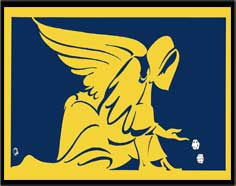During the 1970s the Sydney syndicates, gathering capital and political contacts through control over illegal gambling, expanded into drug trafficking. Although N.S.W. police have long been unwilling to admit this involvement, the diversification of underworld investments from more ‘acceptable’ illicit services like prostitution, abortion and gambling into narcotics is a pattern common to organized crime across the globe. As Mr Justice Moffitt had warned might happen in his 1974 report, Sydney syndicate leaders began investing in the amphetamines and cannabis trade in the early 1970s and then shifted capital into harder drugs as the market for heroin developed in Australia.
In fact, almost all of the major drug arrests in the past decade have involved established organized crime figures. Organized crime played an increasingly dominant role in drug importation, interstate distribution and the purchase of police and political protection for dealers and distributors. Through strong international contacts with leading overseas criminal leaders initially developed through various gambling ventures, Sydney syndicates have had no difficulty gaining an adequate foreign supply of both heroin and cannabis.
No single syndicate, no single ‘Mr Big’, dominated Australia’s drug traffic in the 1970s. Unlike the American Mafia of the 1960s which made regular, bulk heroin shipments along established routes, the Sydney drug syndicates of the 1970s have handled smaller quantities and used a changing pattern of courier and smuggling techniques. While the American Mafia has had over fifty years’ experience in the heroin trade, Sydney organized crime has been heavily involved for only five years and the somewhat erratic quality of Australian trafficking techniques is a result of this relative inexperience. More sophisticated smuggling techniques involving international merchant banking firms and containerized shipping may well have developed between Australia and Southeast Asia, but hard evidence has yet to be gathered to establish the truth of reports about these operations.
But Australia’s drug traffickers are by no means inexperienced or unsophisticated. Australians initially became involved in the international narcotics trade in the mid-1960s when a number of N.S.W. police officers became the first major group arrested in the United States for importation of Southeast Asian heroin. Increasing experience over the next decade gave Sydney dealers the skill and contacts to launch large-scale cannabis and heroin imports in the mid-1970s. Judging from the purity of sample seizures and the regularity of supply, Australia’s heroin distribution networks developed to a point by 1978-9 where they were more reliable than European and American operations. Throughout the 1970s the purity of New York street samples fluctuated in the low range of 3 to 6 per cent reflecting the strong police pressures on distribution networks which produced periodic ‘street panics’. In contrast, Australian retail heroin packets remained at a steady high of 22 per cent and supply was constant.
The popular image of heroin smuggling depicted in the French Connection as bulk shipments concealed in automobiles and cargo ships gives only a partial picture of a more complex reality. Instead of a regular ‘pipeline’ from Bangkok moving bulk heroin, Australia’s drug supply systems are many and complex. In place of the inappropriate ‘pipeline’ metaphor, we might substitute the concept of a narcotics ‘reservoir’. Fed constantly by streams of varying size and regularity, Sydney’s reservoir of heroin supply is kept at a constant level by sources ranging from the kilogram ‘body packs’ to the multi-kilo lot brought in through private aircraft or concealed in commercial cargo. Since 1975 this somewhat erratic but still efficient supply system has kept the reservoir full of Southeast Asian narcotics and enabled distributors and street pushers to maintain a retail volume adequate to sustain the growing numbers of heroin users and addicts.
While large numbers of occasional smugglers like the young Palm Beach ‘trendies’ crowd the airways between Bangkok and Sydney, organized crime importers appear to be the most regular and substantial suppliers of Australia’s heroin. If Australia’s addicts had to rely on the sporadic trickle of heroin in body packs or secret suitcase compartments, the major urban distribution networks would frequently run dry, something which has not happened since high-level heroin use began in 1975. The Palm Beach trendies and the other one-kilogram smugglers are little more than occasional opportunists operating on the fringe of a large-scale distribution system developed and sustained by organized crime.
If Australia’s leading organized crime personalities dominate the drug import and distribution networks, they do not operate within a unitary, all-embracing drug syndicate. In keeping with the milieu structure of Sydney’s underworld, the major drug smuggling operations appear to be put together on an ad hoc basis by leading syndicate personalities who recruit the necessary capital and criminal talent to execute major drug import operations. Simultaneously or subsequently, another major milieu figure may recruit another team of specialists to mount a different scheme, giving Sydney’s drug traffic a superficially chaotic appearance.
From the growing number of drug cases brought before the N.S.W. courts it is possible to draw up a composite portrait of an organized crime narcotics operation. Sitting at the epicentre of the drug trade are the leading organized crime personalities whose names appear weekly in the Sydney press. Acting as entrepreneurs and organizers of broad criminal conglomerates, syndicate personalities procure capital from illegals like SP bookmakers or legitimate businessmen seeking a tax-free business coup. Working directly or through intermediaries, entrepreneurs then contact a reliable field agent in Bangkok, who may conceal his drug dealing by running a local bar, and places an order for a drug shipment varying from 8 kilograms of heroin to 4 tonnes of cannabis. Given the intensity of international drug law enforcement in Bangkok by American, European, Thai and Australian narcotics agents, the resident local agent is an absolute essential for a foreign syndicate trying to procure more than a kilogram of heroin. Many foreign narcotics agencies pay high prices for intelligence and reward informants on a bounty system for seizures, making resident Chiu Chow Chinese syndicates in Bangkok exceptionally wary of foreign contacts and unwilling to deliver anything but a minimal shipment to an unknown client.
Once the capital is procured and the agent negotiates delivery, the Sydney syndicate figure has to arrange for shipment. While an air passenger courier is the quickest and most direct way of making a delivery, it is also the method with the greatest attendant risks. Most cargo shipments and all illegal small aircraft flights enter Australia with no customs examination, but every air passenger is in theory subject to search. The clustering of international arrivals at Sydney’s airport between 6 and 10 a.m., however, has the effect of straining the Customs force beyond their capacity to search. Australian Customs rely almost exclusively on computerized reference files of convicted or arrested criminals and suspected smugglers. Organized crime knows of these procedures and in recent years has taken steps to neutralize the computers: employment of young couriers, usually attractive unmarried women who have no records; bribing the computer operators for access to the list of potential smugglers.
Couriers are the most dispensable and unreliable of those involved; most eventually turn Crown’s evidence when caught. The criminal entrepreneur retains the services of a solicitor to handle any legal complications arising from an arrest. Supplementing these legal services, the criminal organizer maintains contacts with compromised members of police, parliament and the judiciary to influence the handling of any indictments. After the drugs arrive, the entrepreneur arranges their delivery to a distributor who will sell them through street dealers or market them interstate. Although the degree of central control by the syndicate entrepreneur varies widely, every major drug dealer must somehow acquire most of these services to operate with any success.
Over the past decade Australia’s drug problem has gone through three distinct phases of development. The current drug problem began in the late 1960s as American GIs crowded into Kings Cross on ‘R and R’ from Vietnam, bringing with them their taste for cannabis and heroin. Almost simultaneously, Australian criminals began experimenting with the international drug traffic in the Asia-Pacific region. This stage had something of an exploratory quality, and gave way to a more substantial second phase in the early 1970s when Sydney organized crime ventured into amphetamine and LSD trafficking on the city’s North Shore. Moving from a localized Sydney drug market in the mid-1970s, leading syndicate figures expanded into massive, interstate drug distribution, initially in cannabis and later in heroin. At every stage in the growth of Australia’s illicit drug trade during the decade of the 1970s organized crime was heavily involved. To the extent that any small group can be responsible for any major social change, it is accurate to say that organized crime created Australia’s illicit drug traffic.
from Drug Traffic by Alfred McCoy





